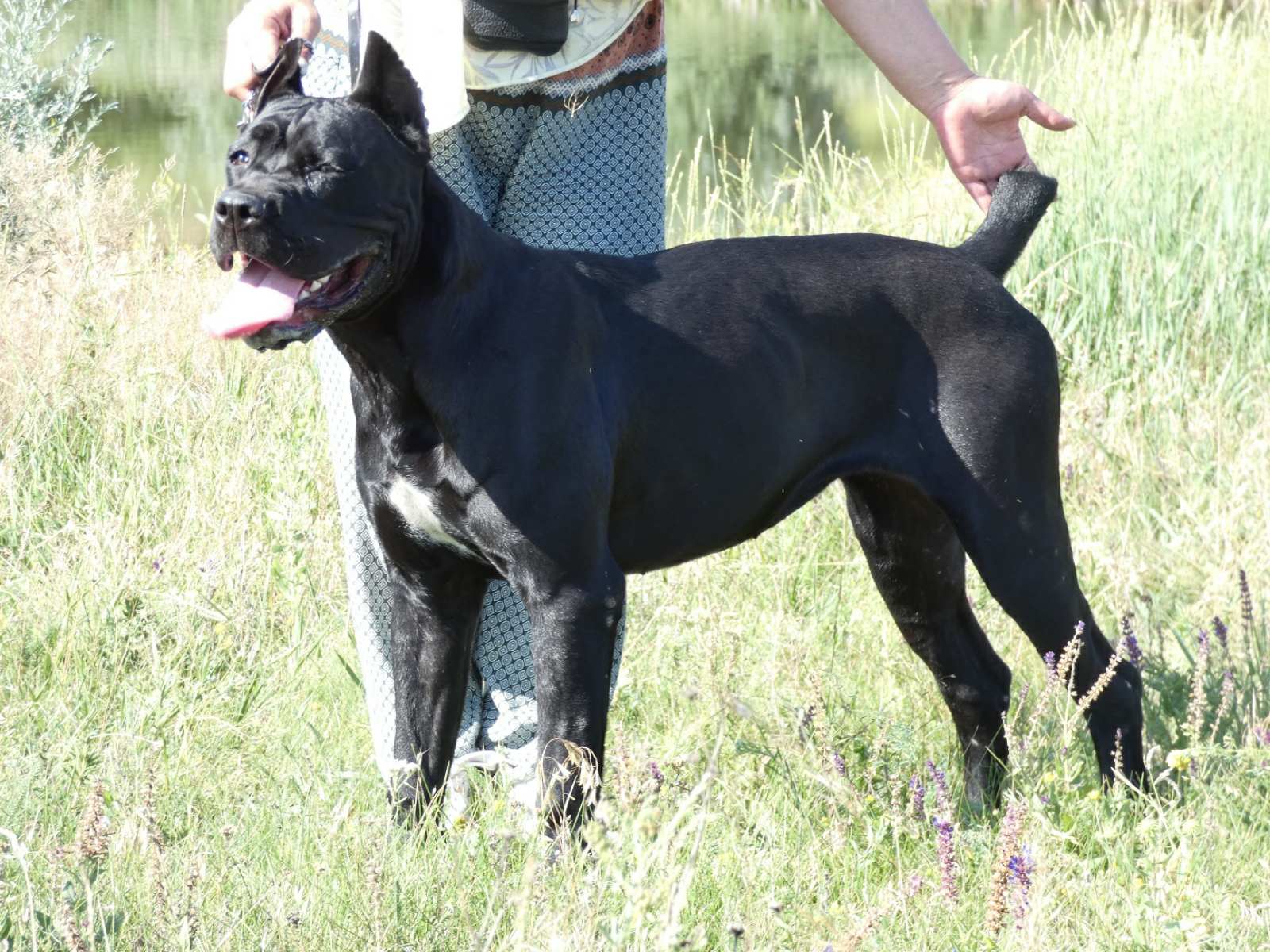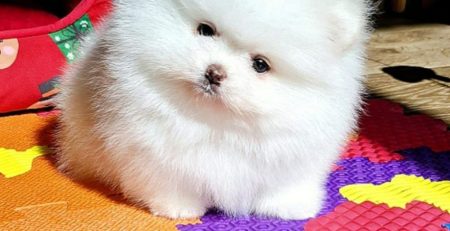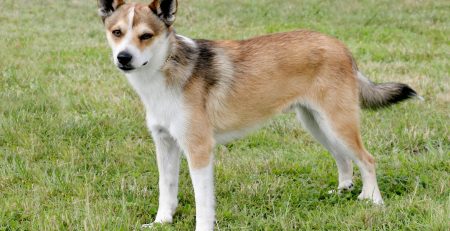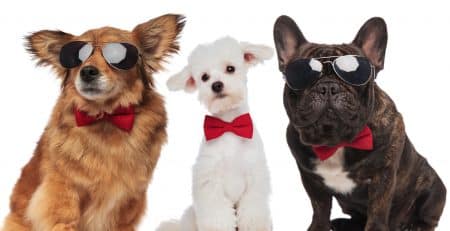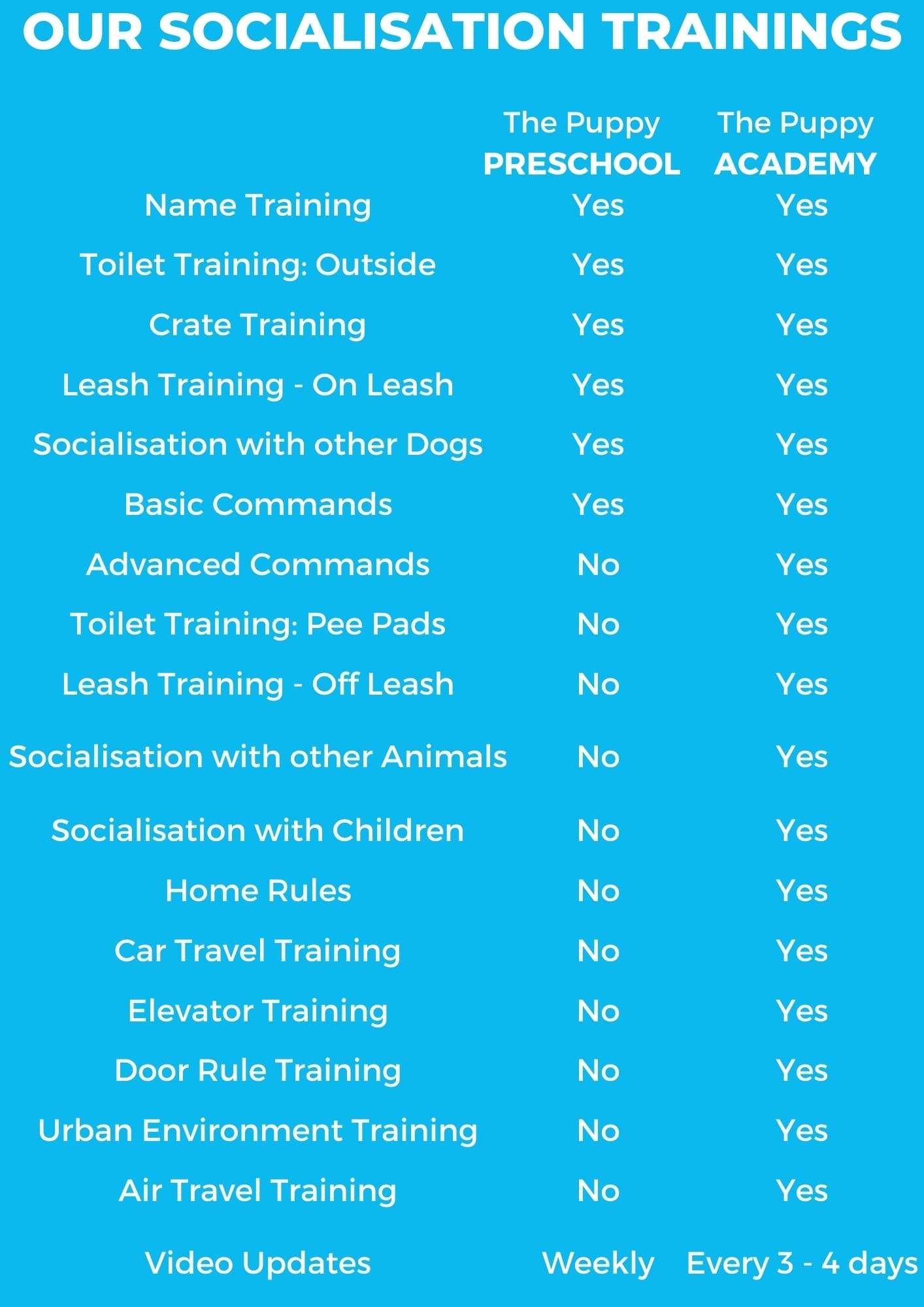The best guard dogs
A guard dog, sometimes called a watchdog dog, is a dog that is used to guard property. Guard dogs watch out for intruders, or unexpected people and animals. As well as deterring intruders, guard dogs may also alert their master of the intruder’s presence. Guard dogs are trained only to give warning of strangers, and will not harass his/her master or other familiar people.
What makes a dog a good guard dog?
Dogs are loyal animals, but loyalty alone isn’t enough to make a good guard dog. Some dog breeds have a natural tendency or instinct to guard and protect their family and home. Guard dogs also tend to be larger dogs, as this makes them both more intimidating and more capable of dealing with intruders.
A guard dog must be trainable, as their pure guarding instinct needs to be directed and focused with proper training. A trainable dog will be able to focus on you during training, and will also listen to what you are asking. A trainable dog will have a strong desire to please you, and will try to work out what you want.
A calm, confident temperament is a good guard dog trait, as overly suspicious, aggressive, or nervous dogs may be uncontrollable and potentially dangerous if used as guard dogs.
To summarise, a good guard dog should be
- Loyal
- Have a strong instinct to guard and protect
- Calm and confident
- Be an appropriate size
- Trainable
How to train a guard dog?
It is highly recommended that you seek expert advice when training your guard dog. Many guardian breeds are large and prone to stubbornness, which can make training a challenge. It is good to seek out professional guard dog trainers to help your guard dog get the best start. Depending on your area, you may be able to attend classes with your dog, or you might have the option to send your dog to a training institute for a few weeks. Be sure to do your research to see whether the trainer is reputable: ask former clients and check reviews.
Choose a trainer who uses positive reinforcement techniques. It is a common misconception that guard dogs should be handled roughly to make them tougher, and there are still many trainers who use coercive or punitive methods. There is absolutely no need for this. Many guard dog breeds already have a strong guarding instinct, and will be pleased to have the opportunity to use it. There is research suggesting that guard dogs respond better the positive reinforcement methods. Unnecessarily harsh methods can create conflict with your dog, which may make the dog more likely to bite their handler.
Training sessions can start and end with a fun game or some treats. This creates a calm, happy atmosphere, encouraging your guard dog to learn more quickly.
If you opt to buy a puppy rather than a fully trained adult dog, you will need to properly socialise him/her before you start guard dog training. Socialisation will help build your dog’s confidence and get them used to new people and situation. A guard dog will see a lot of different people and situations, but if properly socialised they will cope well. Your dog should also learn basic obedience (such as “sit” and “stay”) before starting guard dog training.
There are a few key points that your guard dog should be learning:
- Obedience: your dog needs to learn to listen to you. Be sure to be consistent when teaching commands, so that your dog understands exactly what is expected from them. This will take patience and time, so don’t rush your dog. Your guard dog must be able to consistently obey commands; a disobedient guard dog is a liability! If you are consistent with your training, your dog will understand what is expected of them.
- Learning the territory: your dog should be familiar with the area they will be guarding, and where the perimeters are. Part of the training should involve walking the borders of the area.
- Proper barking: if your dog barks all the time, you will eventually tune it out. Your guard dog will need to learn only bark to alert you of approaching strangers. This part of the training involves praising your dog for barking at strangers approaching the area they are guarding. Your dog should also learn to stop barking when you ask. This part of the training can be tricky, and you may need to recruit some volunteers to act as “strangers” to help.
- Problem solving: the best guard dogs are smart enough to distinguish between “threats” guests, and passers-by. You will need to put in a good amount of training to achieve this, and it will take a few years of experience for your guard dog to get to this point. Many guardian breeds are naturally suspicious of strangers, so you will need to actively teach them to be polite to guests. This part of the training will need to be broken down into several steps, and may take a while to achieve.
Instinct control
Your guard dog should not to overly aggressive. Unless you are working with a professional guard dog trainer, it is not advised to teach your dog to chase or attack intruders. Barking is enough to deter most intruders, especially if your dog is big and looks intimidating. Remember: intruders don’t know that your dog is only trained to bark at them. Most people won’t risk being bitten or mauled by a large dog, so barking is usually enough to deter them.
It is all too easy for a poorly trained guard dog to accidentally bite a guest. Dog bites are serious injuries, and it is likely that your dog will be seized by the authorities and euthanized. You may also be on the receiving end of a lawsuit.
Welfare
A guard dog is a working animal, but is still protected by the usual animal welfare legislation. Your guard dog should be given appropriate food, water, shelter, and veterinary care. Leaving your guard dog chained or tied in a single area and barely interacting with him/her is not appropriate care. Chaining/tying dogs is illegal in some regions, and also makes your guard dog far less effective at their job.
You should be interacting with your guard dog daily, not just to feed them. You should be giving your guard dog “down time” where they get to be a normal dog. “Down time” can include walks and play-time. Daily interaction with your dog will also give you a chance to check their health and condition. Spotting medical issues early on often means that they will be easier to treat.
Most guard dogs live outside, but you should provide appropriate shelter in case of bad weather. A good-sized kennel or shed would work, so long as it is comfortable and protects the dog from the elements. In extreme weather conditions, bring your dog inside for shelter.
Keep in mind that certain dog breeds are banned in some regions; for example, in the United Kingdom the Japanese Tosa, the Pitbull Terrier, and the Dogo Argentino are illegal to own.
15 best guard dog breeds
Akita: this powerful Japanese breed can be tricky to train, but are generally very calm, easy-going dogs. Typically reserved with strangers, the Akita is typically only truly friendly to those that he/she considers to be family. They have a thick coat and cope well with colder weather.

American Staffordshire Terrier: Nicknamed the AmStaff, this muscular breed is eager to please and as such is highly trainable. They love a challenge and will meet it head on. Their head-strong nature can be a challenge, so proper training and socialisation are needed. Be aware that this breed can be extremely aggressive towards other dogs: do not leave your Am Staff unsupervised with other dogs!

Boxer: A popular pet, the Boxer also makes a good guard dog. They are a clever and energetic breed, and are usually easy to train. Keep in mind that, like many short-nosed dogs, the Boxer does not cope well with heat! If you live in a hot climate, make sure to bring your Boxer into an air-conditioned space on hot days, and provide plenty of water.
Boxer
Black Russian Terrier: This large terrier is surprisingly light-footed and graceful. Powerful and protective, the Black Russian Terrier will need lifelong training and socialisation to prevent aggression: this is not a dog for the faint of heart!

Bull Mastiff: The courageous Bull Mastiff is large and in charge! If trained and socialised from an early age, Bull Mastiffs are typically calm, agreeable dogs. They are intelligent and eager to please, but can be aggressive towards other dogs (puppy classes can reduce this tendency). They thrive on routine, and are happiest when they know what to expect.

Cane Corso: Calm and collected, the majestic Cane Corso can often be dominant and fiercely protective: proper training and socialisation are a must! Despite their bossiness, the Cane Corso has a heart of gold and is truly affectionate with family.
Caucasian Mountain Dog: The magnificent Caucasian Mountain dog is clever and independent. Though not the most obedient, they are fiercely loyal and protective of their family. They are naturally wary of strangers, which can be difficult if you have guests.

Doberman Pinscher: Bold and loyal, the Doberman has long been prized as a guard dog. Sleek yet strong, the Doberman will eagerly patrol his/her territory, keeping intruders at bay. Dobermans are very clever but can become pushy and destructive if not properly handled from a young age: puppy classes and obedience training are vital.
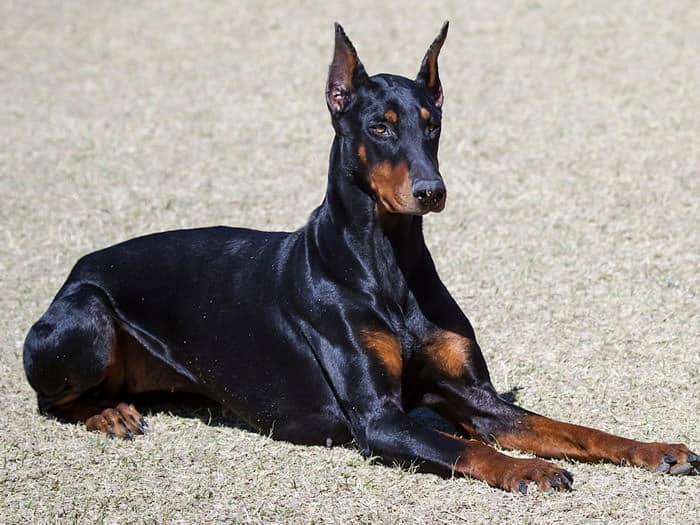
Dogue de Bordeaux: These magnificent mastiffs are a strange combination of stubborn and sensitive. Although they appear intimidating, these stocky dogs respond poorly to harsh training methods. At the same time, they can be pushy, so a firm but fair approach is best. Like many short-nosed dogs, the Dogue de Bordeaux does not cope well with heat, so keep your dog out of the heat during the summer.

German Shepherd: The versatile German Shepherd reserves affection only for family; to the rest of the world they are aloof. This breed is eager to please, and will thrive with firm, confident, and consistent training.

Giant Schnauzer: A territorial and active breed, the Giant Schnauzer is smart and quickly learns to tell friend from foe. They love to be with their owners and hate to be left alone; as such, this breed is best for owners who want both a pet and a guardian.

Komondor: This Hungarian dog breed is famous for its white corded coat. If you are thinking of getting a Komondor, be prepared to spend some time keeping their coat clean: weekly cleaning should be sufficient. The cords help to protect the Komondor, and also act as both insulation and cooling for the dog. The Komondor is a relaxed dog, with an intelligent, independent nature. While affectionate with family, the Komondor is indifferent or distrustful with strangers.

Perro de Presa Caneiro: Also called the Canary Mastiff, this Molosser-type breed makes a good guard dog, as they are naturally suspicious of strangers. Keep in mind that the Presa Caneiro is energetic and needs proper exercise. This is a breed that benefits from early socialisation and obedience training. They can be aggressive towards other dogs.
Rottweiler: Big and beefy, the Rottweiler is perhaps the archetypical guard dog. They love people and don’t do well if kept in isolation. If you properly socialise your Rottweiler and keep training consistent, you will be able to appreciate the breed’s intelligence and desire to please.

Tibetan Mastiff: These enormous (a known giant dog breed) fuzzy dogs often have an independent nature, and will often follow their own judgement rather than blindly obeying their human. They need careful training from a person who is experienced with this breed. The Tibetan Mastiff’s intimating appearance is often enough to deter intruders without the need for specialised guard dog training.
Other breeds good at protection
- Anatolian Shepherd Dog
- Bergamasco Sheepdog
- Boerboel
- Bouvier de Flandres
- Briard
- Canaan Dog
- Catahoula Leopard Dog
- Central Asian Shepherd Dog
- Chow Chow
- Estrela Mountain Dog
- Great Dane
- Irish Wolfhound
- Kuvasz
- Rhodesian Ridgeback
- Thai Ridgeback
Who should buy a guard dog and who should not
Do you really need a guard dog? A properly trained guard dogs represents a significant financial investment. You don’t just invest money, but time into training and maintaining your guard dog. Guard dogs are a potential liability, as there is always a chance, however slight, that your dog may hurt or seriously injure an intruder. You need to ask yourself whether you truly need a guard dog, and if you are prepared to deal with these risks.
Consider the following:
- Do you really need a guard dog? Do you live in a dangerous or remote area, or have valuable property that needs protecting?
- Are you prepared for the risks? Are you able to take proper precautions to make sure that your guard dog does not injure the wrong person?
- Would a “fake guard dog” be more suitable for your needs? A fake guard dog is just a large dog with an intimidating appearance – he/she has not actually been trained as a guard dog. Seeing a big tough dog is enough to deter many potential intruders.
References
- “Best Guard Dogs Breed Collection Page.” Purina, Purina, www.purina.com/dogs/dog-breeds/collections/best-guard-and-protective-dog-breeds.
- “Best Guard Dogs.” American Kennel Club, American Kennel Club, www.akc.org/dog-breeds/best-guard-dogs/.
- “Guard Dogs.” Animals in Human Society, Animals in Human Society, animalsinhumansocieties.weebly.com/guard-dogs.html.
- “How Is a Security Dog Trained?” Security Guard Dogs & Security Services – K9 Patrol, K9 Patrol, 17 Apr. 2018, k9patrol.co.uk/dog-training/how-is-a-security-dog-trained/.
- Benal, Jolanta. “Do You Need a Guard Dog?” Quick and Dirty Tips, The Dog Trainer, 17 Mar. 2020, www.quickanddirtytips.com/pets/dog-behavior/do-you-need-a-guard-dog.
- Colman, Stephanie, and Stephanie Colman. “Training Police Dogs and Military Dogs Using Positive Methods.” Whole Dog Journal, Whole Dog Journal, 21 Mar. 2019, www.whole-dog-journal.com/training/training-police-dogs-and-military-dogs-using-positive-methods/.
- Fratt, Kayla. “Kayla Fratt.” Journey Dog Training, Journey Dog Training, journeydogtraining.com/guard-dog-training/.
- Haverbeke, Anouck, et al. “Efficiency of Working Dogs Undergoing a New Human Familiarization and Training Program.” Journal of Veterinary Behavior, vol. 5, no. 2, 2010, pp. 112–119., doi:10.1016/j.jveb.2009.08.008.
- Mitchell, Donna. “Do You Really Want a Guard Dog?” Dog Training Basics, Dog Training Basics, www.dogtrainingbasics.com/GuardDog.html.




